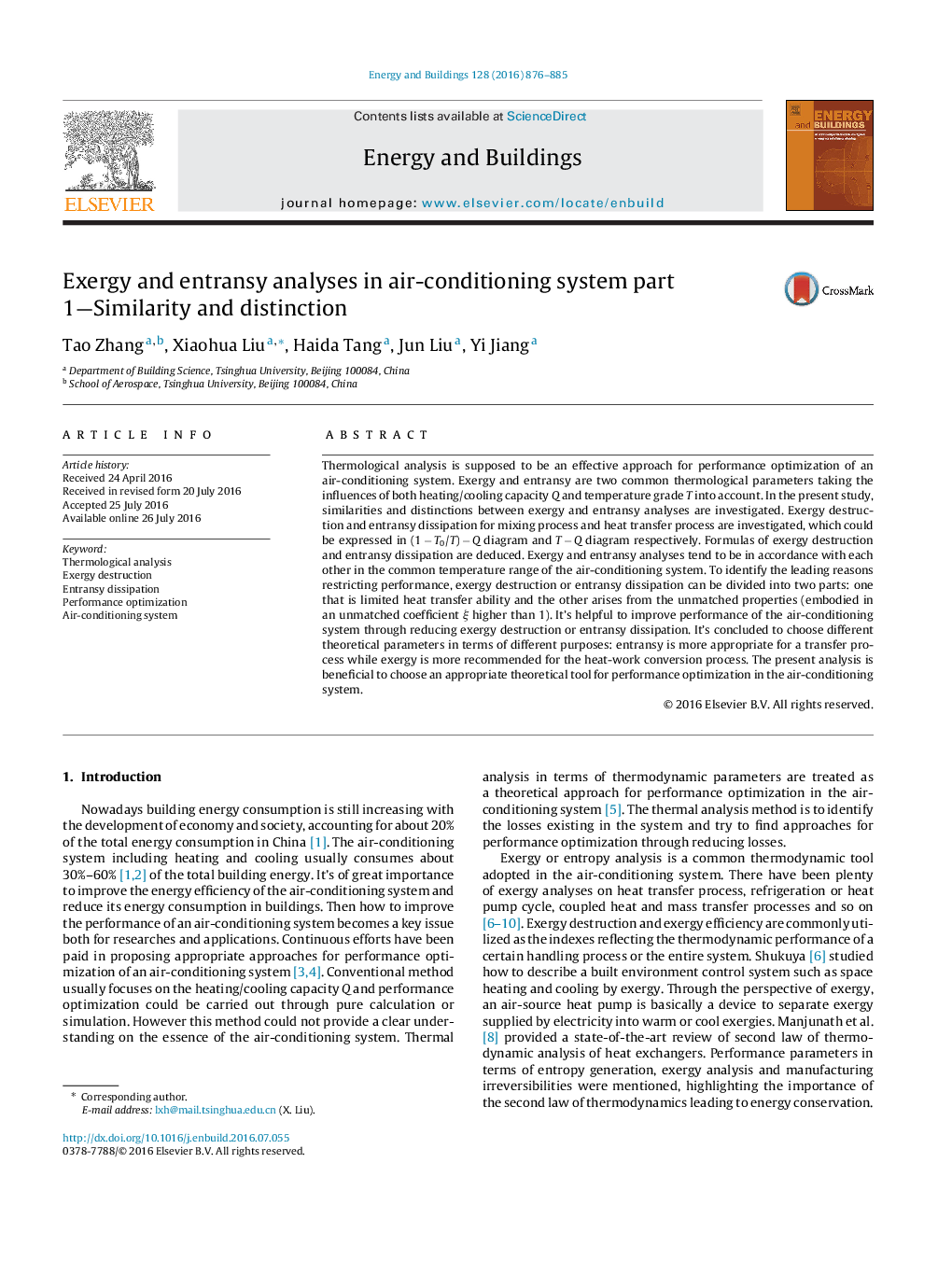| Article ID | Journal | Published Year | Pages | File Type |
|---|---|---|---|---|
| 6729909 | Energy and Buildings | 2016 | 10 Pages |
Abstract
Thermological analysis is supposed to be an effective approach for performance optimization of an air-conditioning system. Exergy and entransy are two common thermological parameters taking the influences of both heating/cooling capacity Q and temperature grade T into account. In the present study, similarities and distinctions between exergy and entransy analyses are investigated. Exergy destruction and entransy dissipation for mixing process and heat transfer process are investigated, which could be expressed in (1 â T0/T) â Q diagram and T â Q diagram respectively. Formulas of exergy destruction and entransy dissipation are deduced. Exergy and entransy analyses tend to be in accordance with each other in the common temperature range of the air-conditioning system. To identify the leading reasons restricting performance, exergy destruction or entransy dissipation can be divided into two parts: one that is limited heat transfer ability and the other arises from the unmatched properties (embodied in an unmatched coefficient ξ higher than 1). It's helpful to improve performance of the air-conditioning system through reducing exergy destruction or entransy dissipation. It's concluded to choose different theoretical parameters in terms of different purposes: entransy is more appropriate for a transfer process while exergy is more recommended for the heat-work conversion process. The present analysis is beneficial to choose an appropriate theoretical tool for performance optimization in the air-conditioning system.
Related Topics
Physical Sciences and Engineering
Energy
Renewable Energy, Sustainability and the Environment
Authors
Tao Zhang, Xiaohua Liu, Haida Tang, Jun Liu, Yi Jiang,
